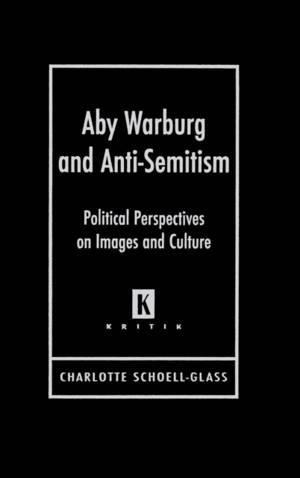
- Afhalen na 1 uur in een winkel met voorraad
- Gratis thuislevering in België vanaf € 30
- Ruim aanbod met 7 miljoen producten
- Afhalen na 1 uur in een winkel met voorraad
- Gratis thuislevering in België vanaf € 30
- Ruim aanbod met 7 miljoen producten
Omschrijving
A landmark study on Aby Warburg's life and work, translated into English.
In Aby Warburg and Anti-Semitism, Charlotte Schoell-Glass provides an unprecedented look at the life and writings of cultural critic Aby Warburg through the prism of Warburg's little-known political views. Schoell-Glass argues provocatively based on archival research that Warburg's work and teachings developed as a reaction to the growing anti-Semitism in Germany, which he saw as a threat to classical education and university scholarship. Translated into English for the first time, Aby Warburg and Anti-Semitism sheds much needed light on Warburg's views on Judaism and the politics of his time.
Aby Warburg, scion of a well-known Jewish banking family in Hamburg, sacrificed his birthright to pursue a career as a private scholar. As an independent art historian, he devoted himself almost exclusively to reinterpreting the revival of antiquity within the Renaissance, urging other art historians to approach their work as a brand of the larger study of image making and philosophy. In this study, Schoell-Glass examines Warburg's most influential essays on Dürer, Rembrandt, and the Sassetti Chapel and his most innovative concepts--the accessories of motion, the pathos formula, and the afterlife of antiquity--to illustrate how Warburg persistently showed a deep concern over a disappointing and unstable outside world within his own work. Schoell-Glass shows how Warburg attempts to make a response to anti-Semitism the only way he knew how, despite his awareness of the diminishing societal relevance of that response.
From this study of Warburg, Schoell-Glass produces a multilayered case study of the encounter between twentieth-century politics and scholarship. Art historians, German historians, and scholars of Jewish studies and cultural studies will be grateful for this volume.
Specificaties
Betrokkenen
- Auteur(s):
- Uitgeverij:
Inhoud
- Aantal bladzijden:
- 264
- Taal:
- Engels
- Reeks:
Eigenschappen
- Productcode (EAN):
- 9780814332559
- Verschijningsdatum:
- 1/04/2008
- Uitvoering:
- Hardcover
- Formaat:
- Genaaid
- Afmetingen:
- 165 mm x 233 mm
- Gewicht:
- 548 g

Alleen bij Standaard Boekhandel
Beoordelingen
We publiceren alleen reviews die voldoen aan de voorwaarden voor reviews. Bekijk onze voorwaarden voor reviews.











